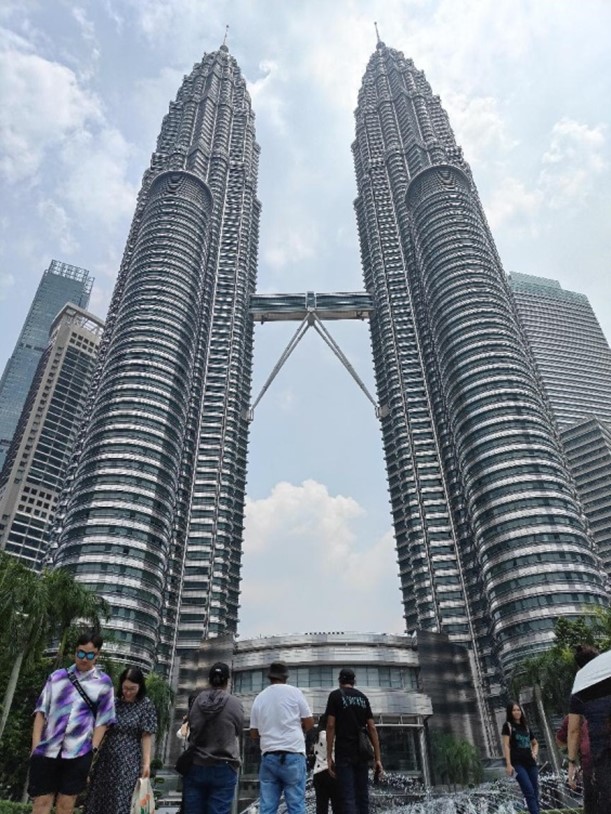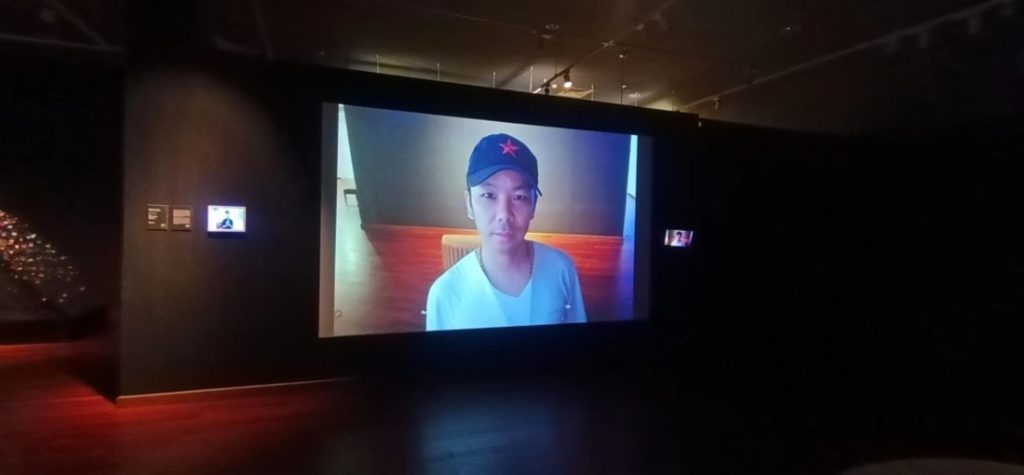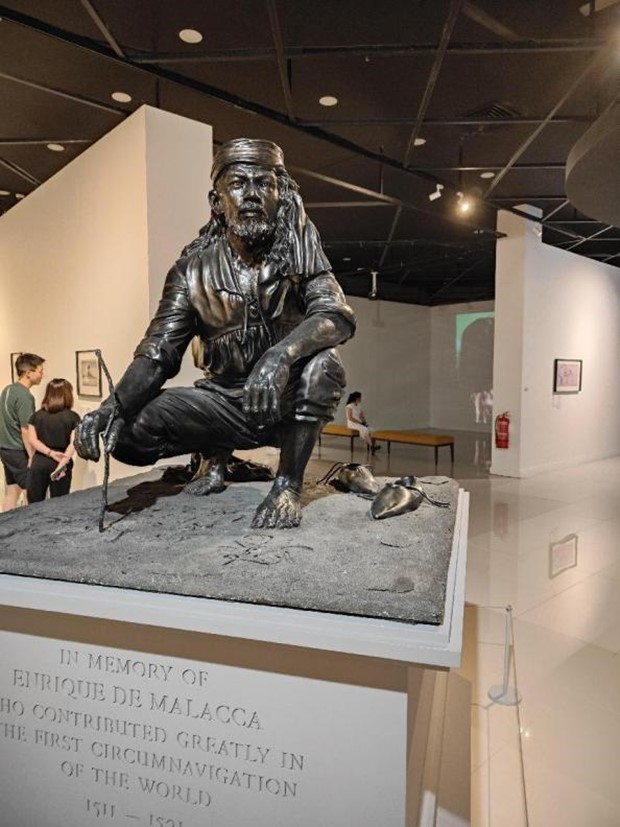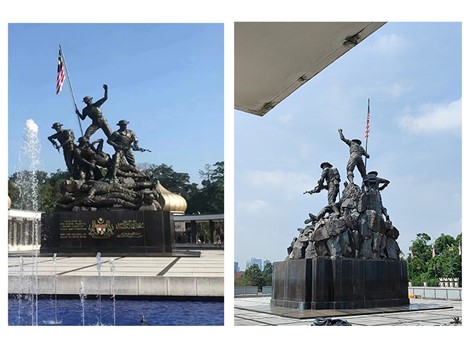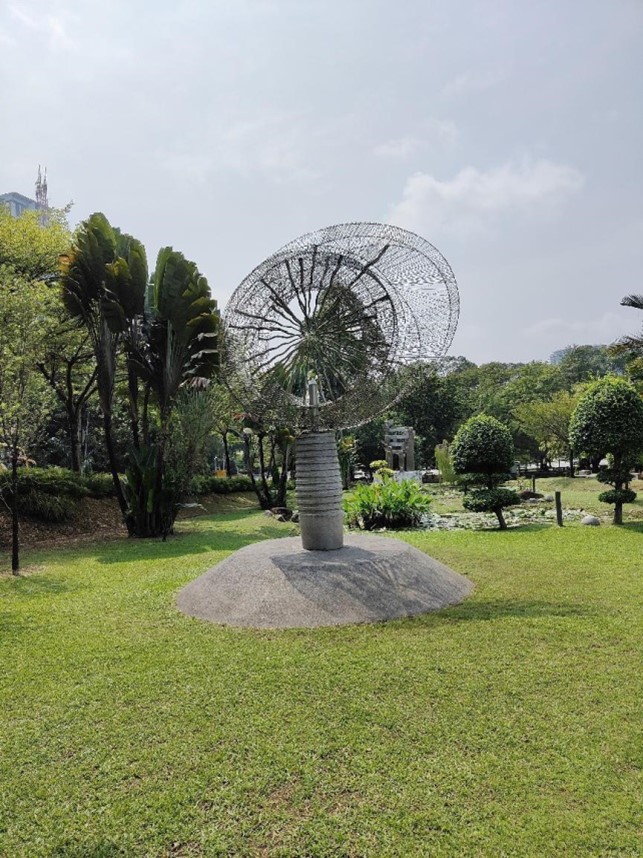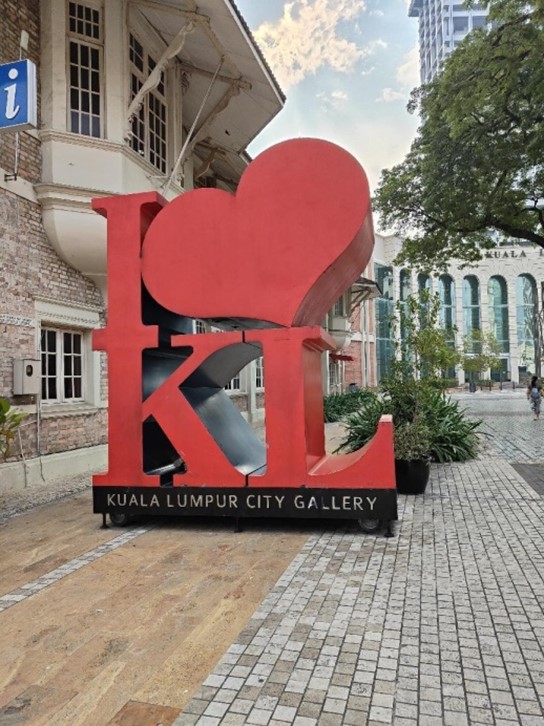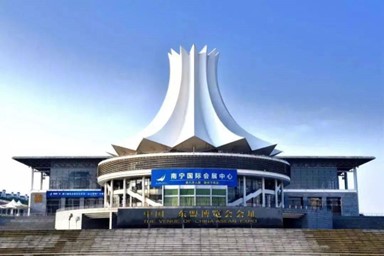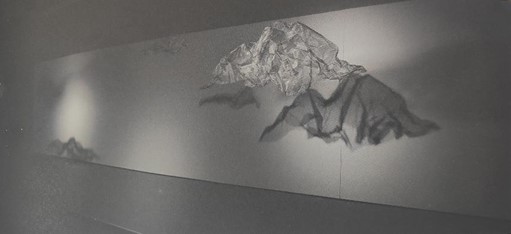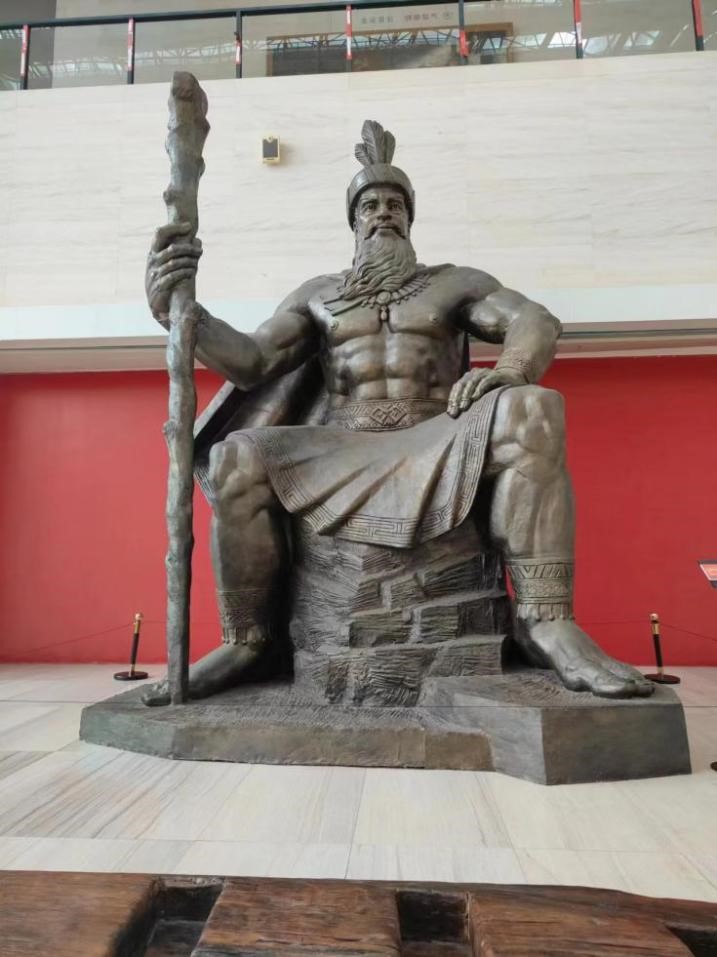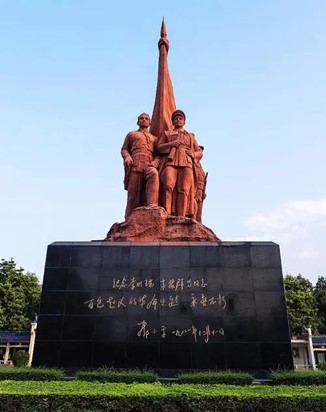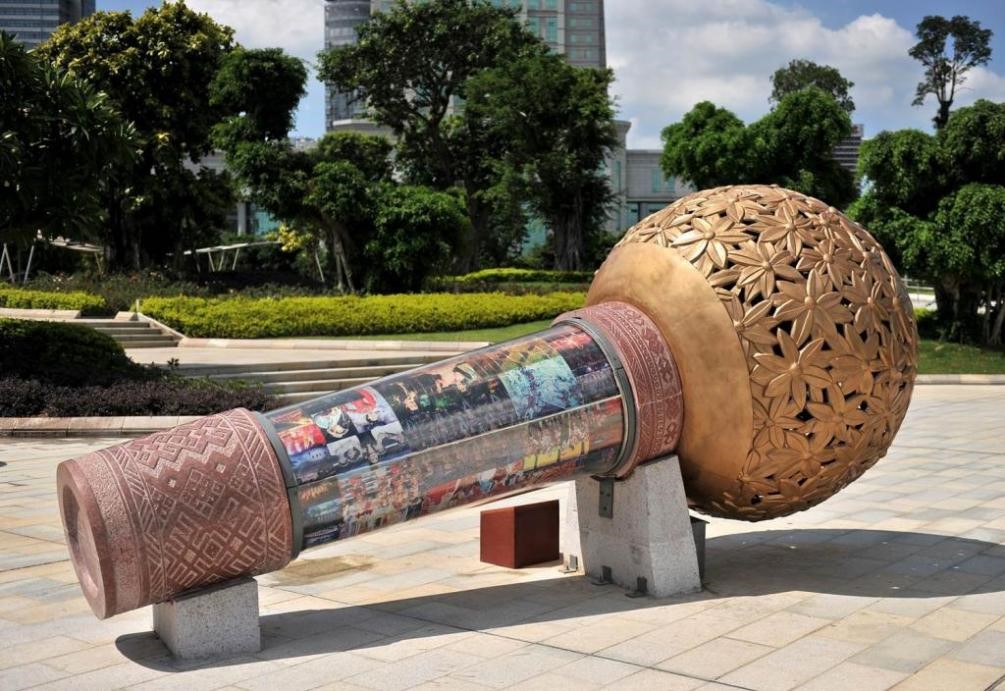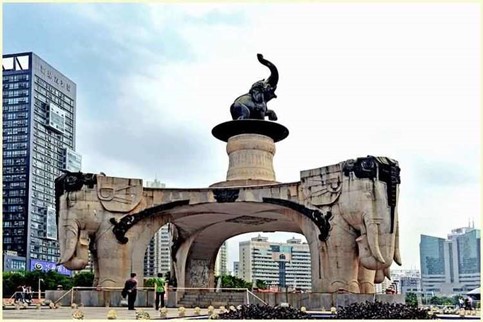A Comparative study of Public Art in Nanning and Kuala Lumpur in the context of ASEAN
- DengJian Feng
- Sharmiza Abu Hassan
- 972-985
- Jul 4, 2024
- Comparative Art
A Comparative study of Public Art in Nanning and Kuala Lumpur in the context of ASEAN
DengJian Feng, Sharmiza Abu Hassan
College of Creative Art, University Teknologi MARA, Malacca, 78000, Malaysia
DOI: https://dx.doi.org/10.47772/IJRISS.2024.806074
Received: 30 May 2024;Accepted: 04 June 2024; Published: 04 July 2024
ABSTRACT
In recent years, the world’s economy and culture have undergone highly integrated development, with all countries striving to promote collaborative innovation and mutual development in the economic and cultural fields. China has established a free trade area with ASEAN countries and has been hosting the China-ASEAN Expo annually in Nanning, China, since 2004. This initiative has greatly facilitated economic and cultural exchanges between China (Guangxi) and ASEAN countries. Especially under the guidance of the “Nanning Declaration” signed at the 2006 China-ASEAN Cultural Industry Forum, Guangxi has conducted a series of activities and continuously explored new methods and approaches to promote cultural industry exchanges and cooperation between Guangxi and China as well as ASEAN.
This paper focuses on the analysis of public artworks in Kuala Lumpur and Nanning, highlighting the role and significance of public art in the construction of a soft city system. Through a comparative study of the role and impact of public art in urban civilization development in Guangxi’s capital, Nanning, and Malaysia’s capital, Kuala Lumpur, the aim is to identify patterns and frameworks of urban civilization development and explore future directions and possibilities for urban civilization construction.
Keywords: ASEAN, public art, Comparative study, Kuala Lumpur, Nanning
TOPIC VALUE AND RESEARCH SIGNIFICANCE
Public art is a form of artistic expression guided by practical creation. As a carrier of urban public art, it is closely related to spatial shaping and cultural expression in urban construction. (BaiLijun. 2020). In the context of soft cities, public art plays the role of a carrier of urban spiritual civilization. It records a city’s cultural context, customs, and history through urban sculptures, urban murals, graffiti, artistic installations in public areas, and urban landscape facilities, development, and urban residents’ expectations for the future of the city. Under the ASEAN Expo and the “Belt and Road” initiative, economic and cultural exchanges between China and ASEAN countries are increasing. Nanning, the provincial capital of Guangxi, China, is the permanent host city of the ASEAN Expo. In recent years, it has always insisted on “bringing in” and combining “going global” and striving to promote cultural exchanges and cooperation with ASEAN countries. In December 2020, the first “China-ASEAN International Urban Sculpture and Public Art Week” was successfully held in Nanning, Guangxi; in mid-December 2022, the second “China-ASEAN” International Urban Sculpture and Public Art Week was successfully held in Nanning, Guangxi. Many experts and scholars from ASEAN countries participated in this seminar, including Rusma from Universiti Teknologi MARA in Malaysia. Professor Diya Anwar made an important statement at this seminar, which was highly recognized by the scholars who participated in the seminar. It can be seen that in the context of ASEAN, China and ASEAN countries have made great progress in the construction of urban civilization and research on urban public art. There are opportunities and prospects for in-depth exchanges and cooperation. This article draws on the comparison of the public art cases in Nanning, the capital of Guangxi Province, China, and the public art cases in Kuala Lumpur, the capital of Malaysia, to deduce the future prospects of exchanges and cooperation in public art between the two different regions, and this will promote the rapid and stable development of public art in the two cities.
ANALYSIS OF PUBLIC ART IN KUALA LUMPUR
Atypical Public Art
From the broad concept of public art, all art that exists in public spaces is public art, whether it is urban sculptures in city squares or paintings in museums and art galleries. Works of art, photography, and even installations are all public artworks, but it is currently recognized that typical public artworks are those in public spaces with high public participation and interactivity. In the development process of public art, there are some new and atypical art forms that have obvious public characteristics but are not intended to entertain the public. Sometimes they are also expressions of the author’s strong personal thoughts.
Architecture
The German philosopher Hegel once said, “Music is liquid architecture; architecture is frozen music.” (Georg Wilhelm Friedrich Hegel.1835). architecture exists in public space. Its different appearances and physical appearances can be seen from different angles in urban space. However, some buildings have obvious and strong public art tendencies, such as The Petronas Twin Towers in Kuala Lumpur, Malaysia, is one of the top 20 skyscrapers in the world. The tower is 452 meters high and has 88 floors above ground. The building was designed by American architectural designer Cesar Pelli and used a large number of materials on its surface, materials such as stainless steel and glass. The Petronas Twin Towers and the neighboring Kuala Lumpur Tower are both well-known landmarks and symbols of Kuala Lumpur. These buildings with public artistic attributes represent the spirit of the place, and if the audience wants to understand the cultural characteristics of each place, the spirit of the place is an important determining factor. (Lawrence Durrell. 1997)
There have been different viewpoints within the academic community regarding the public art attributes of the Petronas Twin Towers in Kuala Lumpur. Some scholars believe that it is primarily a landmark building, with its artistic features and attributes presented through its appearance and architectural materials. However, other scholars argue that the Petronas Twin Towers have become a symbol of Kuala Lumpur and represent not only the technological advancements of the era but also showcase Malaysian culture and way of life. It has seamlessly integrated with the people of Kuala Lumpur and even the entire Malaysian population, making it both a remarkable architectural structure and a significant public art piece.
Figure 1: “Twin Towers” in Kuala Lumpur (photographed by Deng Jianfeng)
The author believes that distinct architectural structures can serve as atypical forms of public art, regardless of the time period, country, or city. Examples include the Eiffel Tower in Paris, the Sydney Opera House in Australia, and the Leaning Tower of Pisa in Italy. These structures are not just buildings, but also artistic forms that blend into the spirit of the local population. For tourists from other countries visiting these architectural landmarks, they serve as a medium for dialogue between tourists and the local culture.
Installation Public Art
Installation public art is an art genre that involves the interaction between specific artworks and the audience in a particular time and space. It emerged in the 1960s and can be traced back to Dadaism and Surrealism, seeking to redefine the role and function of artwork. It partially transforms specific exhibition spaces, rejecting formalistic paradigms and commodification of art. It connects artistic practice with non-artistic realms of life, opposing the notion that art must have separate forms and continuous objects. It breaks the traditional boundaries that view art as a unique domain of aesthetic experience. (Zhu Liyuan, 2014).
As a highly interactive art type, installation art has a strong public art attribute and a strong ephemeral effect, just like the well-known Icelandic-Danish artist Olafur Eliasson said when installing the public art work “Weather Plan”, “You will see clouds that you will never see again today”. It uses a semicircular mirror of a light-emitting device to form a mirror surface, and uses sugar-water compounds to form a fine mist. The big sun emits yellow. The light makes all the surrounding colors disappear, amplifying the audience’s feelings and returning to calm. This kind of installation-type public art work can also be seen in the National Gallery of Malaysia. In the third-floor exhibition hall of the National Gallery of Malaysia, there is a projection screen with photography function, and there is a small camera next to the curtain. , visitors only need to click a button to have their own image appear in the center of the big screen, and the audience can adjust the size and distance of the image themselves, or multiple people can form a group photo together, and the image will stay in the center of the screen for a period of time, visitors can use a camera to take a picture of this image located in the center of the exhibition hall, which is very easy and quick to operate. In the darkly lit exhibition hall, this simple interaction not only provides visitors with a convenient way to take photos, but also gives visitors a dreamy feeling of being the protagonist in the exhibition hall.
Figure 2: National Art Gallery of Malaysia-Image installation (photographed by Deng Jianfeng)
Public in art galleries and museums
Public art is bound to be limited by its place, and its place characteristics always target specific regional environments or characters, events, or topics in that region.(Sun Zhenhua.2003)
Inside the National Art Gallery of Malaysia, there is a bronze sculpture on display, depicting a heroic figure crouching on gravel with a determined gaze. The sculpture portrays Awang Hitam, the first Malay person to circumnavigate the world. He is also known as Enrique of Malacca. The sculpture is created by Fuad Osman, a Malaysian sculptor and public artist. It depicts a Malaysian explorer who was the first Malay person to travel around the world. Historical evidence confirms that Malays were highly skilled in navigation, earning respect from the international community, especially the Western society. In a narrow sense of the concept of public art, the social function of public art lies in maximizing the interaction between the public and the artwork itself, even involving the public in the artistic creation process. Therefore, for public art pieces in museums and galleries, they should disseminate the spiritual and inspirational values of the nation or the community in that specific public space. Erecting statues of pioneers or heroes represents the sculptor’s use of artistic language to promote the public values of the nation and engage with the local population. From this perspective, the Awang Hitam sculpture in the National Art Gallery of Malaysia represents a public art piece with national spirit and value.
Figure 3: National Art Gallery of Malaysia-Awang Hitam Statue (photographed by Deng Jianfeng)
Park public art
Park public art is an integral part of the civic society’s public space. The flowers, trees, public facilities, and public art within the park are all open to the public or visitors. The ultimate purpose of everything in the park is to serve the masses and engage with them. Therefore, public art in parks naturally possesses a strong public attribute. If we were to classify public art in parks, it can be divided into two different types: commemorative public art and decorative public art.
Commemorative public art
Commemorative public artworks often appear in theme parks, drawing inspiration from a specific and concrete historical theme. They present historical scenes in the form of public art, with their artistic expression being either abstract or representational. However, the size and weight of these art pieces are generally large, showcasing a sense of grand aesthetic features. This sense of grandeur conveys the solemn, robust, powerful, and magnificent beauty of historical periods and social changes. The National Heroes Memorial in Kuala Lumpur, Malaysia, perfectly embodies such aesthetic characteristics. Built in 1964, it commemorates the fallen soldiers of Malaysia who fought in World War I, World War II, and prior to the country’s independence in 1957. Located in the Lake Gardens, this monument stands at a height of 15.54 meters and weighs 243 tons, making it one of the largest independent bronze sculptures in the world. Its public art value lies primarily in its historical, educational, and sublime aesthetic value. Many public art scholars even consider its significance and public value comparable to the Petronas Twin Towers in Kuala Lumpur.
Figure 4: Malaysian National Heroes Monument Sculpture (photographed by Deng Jianfeng)
Decorative public art
Decorativeness is a fundamental attribute of public artworks around the world, and in Kuala Lumpur’s various parks, one can often find public art pieces with strong decorative elements and aesthetic composition. These public artworks focus on blending with the surrounding park environment and are often inspired by local figures, plants, and landscapes, using abstract forms for artistic creation. Their existence is not meant to convey moral values, philosophical concepts, or historical facts to the public. Instead, they aim to provide viewers with the enjoyment of beauty through the form, shape, and material beauty of the artwork itself. Therefore, this type of public art is both entertaining and decorative.
Figure 5- Malaysian Perdana Botanical Garden public art work (photographed by Deng Jianfeng)
Urban Square Public Art
Cities are built by people, and they also exist by people. According to Arendt (Arendt), cities represent a major place of human existence. (Hannah Arendt1958) Urban square public art occupies a significant proportion in public art. It is the most common and typical form of art, characterized by its inclusiveness and avant-garde nature. It is often designed in the most prominent spatial locations of urban squares, becoming a symbol of the city and a spiritual and emotional support for its residents. In an era of developed tourism, it can also serve as a means for visitors to understand the city. In Kuala Lumpur, between one side of Merdeka Square and the City Gallery, sits the iconic public art piece “I love KL.” It represents a typical urban square public art work, somewhat influenced by pop art style. However, the piece presents the rhythm, melody, and culture of Kuala Lumpur in the most relaxed manner to the city’s residents and tourists.
Figure 6- Kuala Lumpur City Gallery “ILOVEKL” public art work (photographed by Deng Jianfeng)
PUBLIC ART EXPLORATION AND ANALYSIS OF NANNING
Atypical public art
Architecture
Nanning, the provincial capital of Guangxi in China, shares a similar subtropical monsoon climate with Kuala Lumpur, the capital of Malaysia. Similar to Kuala Lumpur, Nanning also has a landmark building, the China-ASEAN Expo Center, designed by the German architecture firm GMP and the Guangxi Architectural Design and Research Institute, it takes the appearance and structural form of Nanning’s city flower, the hibiscus. The main building has a diameter of 60 meters and weighs over 800 tons, with 12 pristine white petals symbolizing the 12 ethnic minorities in Guangxi.
The hibiscus-shaped architecture of the China-ASEAN Expo Center has become a sacred geographical landmark in the hearts of Nanning’s residents. It not only serves practical functions but also carries public value in terms of representing the ethnic spirit. Therefore, it can be considered as a form of public art, similar to the Sydney Opera House in Australia. Both the China-ASEAN Expo Center and the Petronas Twin Towers in Kuala Lumpur fall under the category of architectural public art, but they have distinct differences. The metallic material and towering height of the Petronas Twin Towers exemplify Malaysia’s technological civilization, displaying a majestic and grand architectural aesthetic. On the other hand, the hibiscus-shaped architecture in Nanning appears gentle, warm, and strongly tied to the local ethnic culture.
Figure 7- Nanning International Convention and Exhibition Center Building in Guangxi, China (source: https://www.sohu.com/a/481380644_121124662)
Installation
In the context of accelerated economic and cultural exchanges in the contemporary world, installation-based public artworks are quite common in various public art venues in Nanning, Guangxi, China. Whether in urban squares, art galleries, or commercial spaces, these installation-based public artworks play a role in conveying the city’s spiritual civilization. However, if one is familiar with China’s geography and history, they will discover that Guangxi is a region with a thriving ethnic culture and distinct natural landscapes. As the capital of Guangxi, Nanning is also filled with ethnic cultural characteristics. Therefore, Nanning’s installation-based public art exhibits strong regional characteristics.
One example is the famous installation-based public art work “Empty Mountain” by Professor Huang Rongchuan from the Public Art Department of Guangxi University for Nationalities in China. It takes inspiration from Guangxi’s natural landscape and combines various elements such as emptiness, reality, light and shadow, projection, and wall surfaces in its creation. Although the artistic techniques used are very modern, the main focus of the content is to promote the regional characteristics closely related to the city.
Figure 8- Guangxi University of the Arts Art Museum-public art installation “Empty Mountain” (photographed by Deng Jianfeng)
Art in Public Art Museums
Strictly speaking, art museums are special public spaces with certain restrictions. They are not completely open to the public without conditions, as some art museums require an entrance fee. As the renowned German philosopher Jürgen Habermas explained in his work “The Structural Transformation of the Public Sphere,” public spaces should be open to all citizens and allow the formation of public opinions. This involves citizens engaging in dialogue. However, in the restricted public space of an art museum, public artworks require unrestricted interpretation and criticism from the public.
The author has visited many large art museums, and most of the public artworks in them symbolize national will and spirit. This can be seen in the Awang Hitam public sculpture at the National Art Gallery in Kuala Lumpur, Malaysia. Similarly, the Bulotuo sculpture, depicting the ancestor of the Zhuang ethnic group at the Guangxi Art Museum in Nanning, China, shares similarities with the sculptures in the National Art Gallery of Malaysia. Both celebrate national hero figures and provide the public with historical and cultural education. However, the Bulotuo sculpture at the Guangxi Art Museum is larger, standing at 4.2 meters tall and weighing 5 tons. According to the Zhuang creation myth poem “Bulotuo,” “Bulotuo” is the “ancestor” of the Zhuang ethnic group, a knowledgeable and omnipotent creator. In other words, Bulotuo is a legendary spiritual figure and symbol of the Zhuang people’s spirit and aspirations. It doesn’t necessarily imply a real existence. On the other hand, the original prototype of the Awang Hitam statue in Kuala Lumpur’s National Art Gallery is a historical figure recorded in historical documents.
Figure 9 – Zhuang ancestor-Bultuo sculpture (photographed by Deng Jianfeng)
Public Art in Parks
Commemorative Public Art
The concept of commemorative public art was discussed in the previous chapter when introducing public art in parks in Kuala Lumpur. Therefore, in this chapter, we will focus on presenting and comparing cases of commemorative public art in parks in Nanning, Guangxi, China. With rapid economic development in China, the urban construction in Nanning has also accelerated significantly, and park construction has kept pace with this development. Due to the “Public Art Percentage Plan,” (WangDan.2020) Nanning’s government and urban construction departments are increasing their investment in the construction of public art in parks. The goal is to establish a physical cultural platform that aligns with each park’s theme. Monumental public artworks are prevalent in Nanning’s major parks. Notable examples include the commemorative public sculptures in Nanning Nanhu Park and the commemorative sculptures in Qingxiu Mountain Park. Among them, the sculptures honoring the two generals, Li Mingrui and Wei Baqun, in Nanhu Park are particularly representative. These sculptures depict the perseverance and courage of the revolutionary generals during China’s Second Civil Revolutionary War. The entire work stands at a height of 14 meters and is carved and assembled from red granite. The generals and soldiers are surrounded by red flags, their eyes showing determination and energy. This public art piece has become an educational symbol and a focal point for various units throughout Nanning during revolutionary anniversaries.
When comparing the National Heroes Memorial Sculpture in Kuala Lumpur and the “General Memorial Sculpture” in Nanning Nanhu Park, we can observe astounding similarities not only in terms of artistic craftsmanship, the height of the artworks, and the conveyed spiritual significance but also in their primary public role.
Figure 10- The General Memorial sculpture
(source: https://m.thepaper.cn/newsDetail_forward_12014369?ivk_sa=1024320u)
Decorative public art
Decorative public art is the most common type of artwork found in parks in Nanning. These artworks often emphasize the pure decorative aspect, (Deng Jianfeng 2017) unlike the decorative public art in Kuala Lumpur parks, which tend to utilize abstract and generalized artistic techniques. In Nanning parks, the decorative public art is more concrete and incorporates cultural elements that are common to the local area and ethnic group. These elements are extracted and applied to the artworks, creating a clear and easily recognizable effect.
Let’s take the decorative public art piece ” Melodies of Time ” installed in Nanning Mingge Lake as an example. It is a concrete representation of a microphone, with the hollow-carved relief of the hibiscus flower on the spherical amplifier of the microphone, and the handle of the microphone carved with the pattern of the Zhuang brocade, which is an intangible cultural heritage of Guangxi. The beauty of the decoration is the first and foremost aspect of this artwork, and its presence does not require any additional interpretation when presented to the public.
Figure 11-Nanning folk song lake “years such as song” sculpture
(photographed by Deng Jianfeng)
Urban Square Public Art
Compared to the iconic public art “I love KL” with its pop art characteristics in Kuala Lumpur’s Independence Square, the public art in Nanning’s squares still carries a strong historical and ethnic cultural background. The author of this article has conducted interviews with some public artists in Nanning and arrived at a conclusion. In many important squares in China, public art must be grand, profound, and carry a sense of national sentiment or uphold social moral order. This can be traced back to China’s Confucian culture, which has a history of over 2500 years. Confucianism emphasizes that knowledge (including ethics, morality, knowledge, and art) should be used for the benefit of the country. The same theory applies to a city where public art in significant locations also bears the responsibility of spreading national culture and promoting national spirit.
Just as Professor Sun Zhenhua, a renowned public art theorist in China, wrote in his book “Concepts and Methods of Public Art,” “In public art, there are two forms of publicness: ‘giving’ publicness and ‘negotiating’ publicness. ‘Giving’ publicness is established on the basis of governmental power, which is equivalent to taxpayers fully entrusting the government to provide public art services to residents. On the other hand, ‘negotiating’ publicness requires communication and dialogue between the government, artists, and the public.” (Sunzhenhua, 2022). However, in China, the determination of the main theme of public art in important locations is generally carried out by the government.
The legend of the five elephants in Nanning’s history is depicted in the Five Elephant Sculpture at Jinhu Square. This sculpture stands at a height of 23 meters and weighs 800 tons. It is divided into two parts. The lower part features four elephants carved from granite, showcasing a solemn and peaceful demeanor. As the elephant bodies gradually blend together, they form a four-sided arched structure, retaining the characteristics of elephants while also possessing strong symbolic meaning.
Figure 12- Nanning Jinhu Square “Five elephant ” sculpture
(source: https://www.meipian.cn/11bdtide)
IDEAS ON PUBLIC ART CREATIVITY, EXCHANGE AND INTEGRATION BETWEEN NANNING AND KUALA LUMPUR IN THE CONTEXT OF ASEAN CULTURE
In the background of the ASEAN Expo, Nanning city of China, is actively engaging in exchanges with cities from ASEAN countries. There is a deep cooperation and synergistic innovation in city culture construction, urban tourism development, and urban economic development. Kuala Lumpur, as an open and modern metropolis, is experiencing rapid development in economy, culture, and technology. The Chinese population in Kuala Lumpur accounts for 36% of the city’s total population, and Chinese cultural elements can be seen everywhere. Therefore, Nanning and Kuala Lumpur have advantages and foundations in terms of urban public art exchange and integration. (Zhang Yangen 2022)
Firstly, in terms of creative public art, the two cities can learn from each other. Nanning can draw inspiration from Kuala Lumpur’s public art design and creativity, which is light-hearted, humorous, and witty. Kuala Lumpur, on the other hand, can learn from Nanning’s grand, majestic, and noble public art.
Secondly, in terms of the form of public art, Kuala Lumpur’s public art features, both abstract and representational elements, while Nanning’s public art is predominantly representational. This is related to Nanning’s geographical location as the capital city of a province with ethnic minorities. In the creation of public art, Nanning tends to incorporate concrete and ethnic elements to a certain extent.
Regarding the future cooperation in public art between the two cities, Kuala Lumpur and Nanning, I believe they can utilize the platform of the ASEAN Expo to establish a permanent and stable ASEAN International Public Art Forum. In fact, this work is already being carried out by the Guangxi Arts Institute in Nanning. However, I think it can be integrated into the ASEAN Expo, allowing public artists from both cities and scholars studying public art to have the opportunity to exchange and collaborate in various aspects such as methods, content, form, and materials of public art creation. This platform could even include a module for hosting public art creation camps to encourage the birth of more outstanding public artworks.
Secondly, both Kuala Lumpur and Nanning have universities offering public art programs. Therefore, they can send students to study abroad at each other’s universities, learning from each other’s experiences in public art education, and applying the knowledge gained to public art design. I believe that through these approaches, the public art creation in Kuala Lumpur and Nanning will experience a leap forward.
REFERENCES
- BaiLijun. (2020). Research on the intermediary of public art in urban micro renewal “-Journal of Nanjing Forestry University),52(1), 33-34.
- Georg Wilhelm Friedrich Hegel (1835); Translated by Zhu Guangqian. Aesthetics (Volume I). Beijing: The Commercial Press
- Lawrence Durrell. (1997). Spirit of Place. Da Capo Press
- Sun Zhenhua. (2003) The Era of Public Art. Jiangsu Fine Arts Publishing House
- Zhu Liyuan. (2014). Aesthetic Dictionary “revised edition”. Shanghai Dictionary Publishing House
- Hannah Arendt (1958) The Human Condition. Chicago: the University of Chicago Press
- Wang Dan. (2020). Transformation of Public Art Laws and Operational Mechanisms in the United States. Journal of Shanghai University (Social Sciences) Vol.37 No.3
- Deng Jianfeng. (2017). Research on Symbolization of Public Art in Guangxi. Journal of Nanning Vocational and Technical College,52(02) p.65
- Sun Zhenhua. (2022). Concepts and Methods of Public Art ( 1rd ed). Shanghai Calligraphy and Painting Publishing House
- Zhang Yangen. (2017, December 11). “The Second China-ASEAN International Urban Sculpture and Public Art Forum” from https://zxys.gxau.edu.cn/xsyj/content_291759


